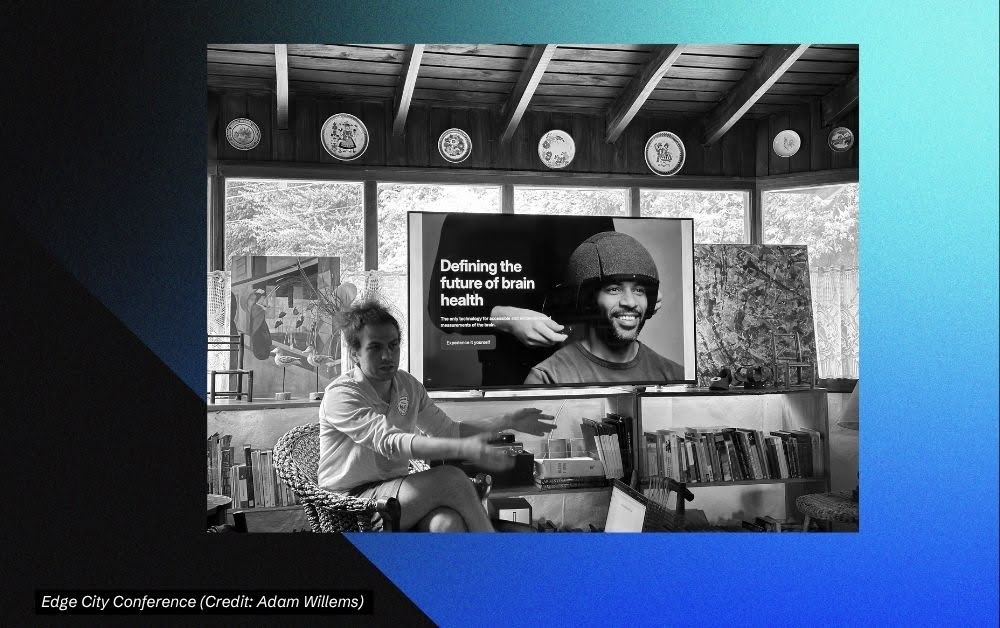
If you’ve never been to San Martín de los Andes in Argentinian Patagonia, and you’ve never been to the Southern Hemisphere at all, let me me offer you a smattering of reference points from the Northern Hemisphere to paint a picture: It’s a mix of Niseko’s outdoorsiness and economy (Japan), Landour’s temperamental weather (India), and Leavenworth, Washington’s folksy, yet not entirely convincing, pseudo-Teutonic-and-Swiss-canton-ish-but-decidedly-colonial aesthetic.
Naturally, where else to host Edge City, a month-long “pop-up city” for crypto enthusiasts and tech workers? I’m dropping in for the last week of programming to understand how some of the more separatist or radical fringes of the realm that would never consider themselves part of the “fintech” umbrella — you might not either, but I consider a cryptocurrency a financial technology — are planning to expand their reach through new tech, narratives, coalitions, and capital in 2025 and beyond.
And I’m following these leads against the backdrop of Argentina’s ongoing currency crisis, which is being managed, somewhat, by pro-crypto libertarian President Javier Milei, whose party won by a landslide margin in recent midterm elections. (Milei is in the midst of a “cryptogate” scandal, having promoted a scammy crypto token, $LIBRA, which wiped out at least $250 million in investor gains; Milei recently shuttered the office investigating the scandal.)
According to the Holonym Foundation, which is hosting the “Human Tech residency” onsite at Edge City, the residency to which I was invited, conference organizers chose San Martín because of its remoteness:
It is a small city grounded in nature, where we can be focused on our earthly selves, and where we are unencumbered to build systems that are not limited by existing power structures and ways of thinking.
Well, for one, existing power structures really hamstrung my flight itinerary. I’ll spare you the details, but I mean more than FAA understaffing brought about by a partial government shutdown. And, second, in my conversations with actual permanent residents of San Martín — not the digital nomads with a fleeting relationship to place enabled by remote work — it’s clear that existing power structures encumber quite a lot.
Over dinner at Pantera Bar Bistro, overlooking the town’s central square, I met three residents of San Martín who work in tech. (I’m withholding their names for privacy reasons.) They shared the ways Argentina’s ongoing economic crisis affects their day-to-day lives; and one member of the group shared their experiences during the “Corralito” of 2001: an almost-bank-run that led to a series of presidential resignations, as well as deadly protests. My local interlocutors, who ate sushi while I sipped on my Fernet Branca-and-coke, said they store much of their savings in cryptocurrency, including stablecoins like Circle’s USDC, as a way to hedge against domestic volatility. They also use Lemon Cash, a wallet and debit card that enables spending in crypto and fiat currency, to make payments around town.
To some of Edge City’s more transient, but more prominent, participants, that tech-savvy reliance on crypto to skirt around state failure is more a sign of success, less an indication of systemic failure. In a Q&A between Edge City founder Timour Kosters and Norman Ohler, the author of Blitzed: Drugs in the Third Reich, Ohler and Kosters briefly chewed on the future of the nation-state. Ohler recycled Kosters’ words to quip that nation-states will be like IBM one day: still around, but not as important as they once were.
Partially to that end, participants in the Citizenship Protocols Residency, hosted by Plumia, Nomad Citizen, and Seapunk Studios — yes, I had to Google those groups too — have been chewing on ways to bring more governance functions onto the blockchain. An (unnamed) Edge City source told me the residency has been pretty heavy on the theory, but maybe a little light on the tech side of things. (In one of the workshops I attended with this group, round-table participants talked about things like “lexical alignment.”) This same source said the Human Tech residency has been heavy on the tech, and light on the theory. They went on to say these two residencies have not interacted much.
I have seen the Human Tech residents work far more diligently than some other groups, with tens of thousands of dollars’ worth of grants on the line for the best projects drafted and presented onsite. That’s a stark contrast to some other residencies, which feature sound baths, sauna-based conversations, and exercises in groundedness. It’s whiplash, jumping from the Valley 996 zeitgeist to this radical self-care vibe embodied in crypto-congregational form.
Edge City’s home to several groups trying to build separatist crypto-cities. Some technologists are working on Cyberia, a “supreme nation” designed for “autonomous, off-grid living.” So-far-unconfirmed rumors also suggest a wealthy Lithuanian multimillionaire in attendance is trying to build a Próspera-like city somewhere in Patagonia. (The conference has quite the Baltic cohort: Including my Latvian self and the elusive city builder, Edge City is also home to a Björk-like Lithuanian documentarian, who happens to be quite lovely.) Cyberia’s leadership may already be fracturing, however, or at least experiencing stage-fright, canceling a key presentation at the eleventh hour. I saw conference goers show up, sigh, and file out of the conference hall, perhaps mourning what could have been: an opportunity to witness the genesis of a crypto-inflected Fyre Fest-esque movement in the convention hall of a three-star Patagonian hotel.

This is all to say that Edge City, like any city, contains multitudes:
- I listened to a Human Tech residency member discuss ways to build non-invasive equivalents to brain-computer interface solutions like Neuralink; some in the crypto community seem abuzz about its potential, citing stablecoin issuer Tether’s $200 million investment in Blackrock Neurotech. Sam Altman’s talk about the singularity came up during this discussion, which suggests some pretty ambitious civilizational goals are at play.
- Word on the street is a Berlin-based DJ/influencer at Edge City is building digital twins containing biometric information. Don’t confuse Frankenstein’s monster with his disc jockey.
- Step aside NCUA Chair Kyle Hauptman, we’ve got a hot new poker-crypto metaphor in town. I grabbed a meal with a Russian software developer and podcaster who, before entering the blockchain realm, was a professional poker player. He said poker is more predictable, as there are fewer variables to account for when making any strategic moves.
- And someone’s building an Ethereum-powered equivalent of Tornado Cash, the crypto-mixing platform (i.e. a way to obfuscate payments) whose founder, Roman Storm, recently pled guilty in a dramatic court case to knowingly transmitting criminal proceeds. Great idea!
Over sushi and soup at Pantera, I asked the locals I talked to whether Edge City will ultimately be a good thing for San Martín: long after the toe-shoe sporting crypto cognoscenti have gone. They said yes, to an extent. The city’s residents have managed to showcase their tech prowess, though much of Edge City hasn’t seemed to notice. During the most recent local demo day held last Wednesday, 50 locals worked on civically oriented projects, and presented their work in English.
Only about five Edge City participants showed up, a source told me. “It’s nomad technocrat day care,” he said.
–Adam Willems


